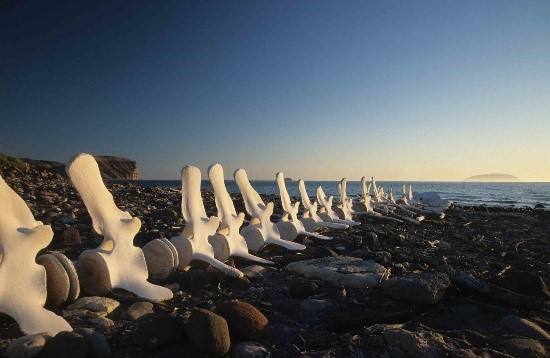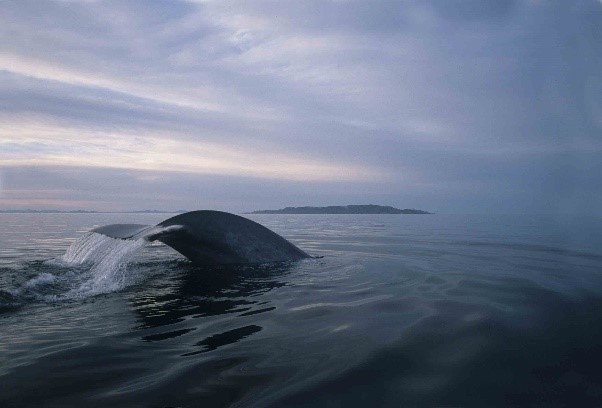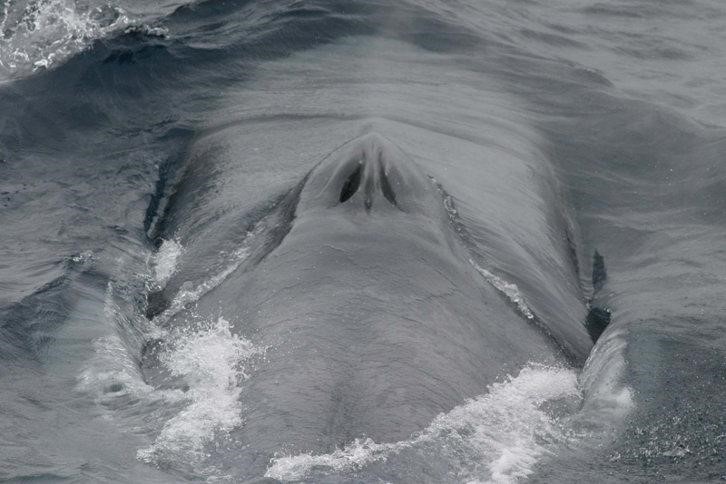With a blue whale taking centre stage at the Natural History Museum, what do we actually know about the largest animal on Earth? The actual skeleton now on display is just over 25m long and weighs approximately three tonnes. It is also believed that the animal was between 10 and 15 years old when it died. If you would like to visit the blue whale skeleton currently on display in the Natural History Museum you can find out more information at their website here.
Blue Whales (Balaenoptera musculus) are the biggest animals in the world, bigger than the extinct dinosaurs. Since we were kids, we could see how big they were watching films like “finding Nemo” but we don’t realize the real size until we see them in real life. They can measure more than 30 m (bigger than a bus) and weight up to 200 tonnes. Their tongue alone can weight more than an adult elephant!
Blue whales prefer deep ocean waters than coastal waters, so it’s highly unlikely you will see any from land. Yet it is possible for them to be seen as the blue whale lives in all oceans, except for enclosed seas and the Arctic. A blue whale was even photographed in British waters for what is believed to be the first time, in 2015. So as their numbers continue to recover it is possible that there will be more sightings around the UK.
Blue whales are known to migrate towards the poles in the summer, where the water is cooler, so they can feed. Then in the winter, they migrate back towards the equator so they can breed. Due to the seasons being opposite in the Northern and Southern Hemispheres, this migration means that the Northern and Southern populations don’t mix.
Despite their size, they eat one of the smallest animals in the ocean, krill. When feeding the blue whale is known to dive for between ten and twenty minutes feeding at depths of above 100m. When it’s eating, the blue whale enlarges its throat plates so it can gulp as much water as possible. They open their mouths over 90 degrees to take the gigantic gulps of sea water, then they push the water out through their 300 – 400 baleen plates to filter out their krill dinner from its watery home.
The species name, blue whale is correlated with their blue appearance underwater, but on the surface their colouring is more a mottled blue-grey. Their underbellies take on a yellowish hue from the millions of microorganisms that live in their skin.
When a blue whale exhales, the spray from its blowhole shoots nearly 12m into the air.
The blue whales are the loudest animals on Earth. They use low-pitched moans and whines to communicate with each other, as well as a sonar that allows them to navigate in the depths of the ocean where the light is almost null. Some of these low frequency sounds can be heard up to 1600km away from the animal. The call of the blue whale reaches levels of up to 188 decibels while human conversation is only 60-70dB and a jet is only 140dB, so this sound can be really painful to human ears. They have no vocal cords so the larynx of the blue whales is the source of these sounds. It’s even believed that in good weather blue whales can hear each other across distances of up to 1000 miles! That’s the equivalent of 39 marathons.
They are usually solitary animals often travelling alone or in small groups. That is why they have this powerful sound, so they can communicate with other individuals. During mating periods adult blue whales perform mating songs. This helps them to find a mating partner, locate other pods and even express sorrow when a pod member is sick or dies. Under these circumstances, animals which may appear to us to be travelling alone may actually be in constant contact with one another.
Boats sonar definitely disturbs blue whales but it is not yet known up to what point they are affected. Some studies say that with any sound outside a whale song can restrict the whales song and as blue whales may depend on communication to keep its family group together and alert them to the presence of food, the effects of sonar are a serious concern.
The population came close to extinction, due to over hunting, but have since begun to recover after becoming protected under the 1966 International Whaling Commission. It’s now thought that there are about 20,000 individuals. Much improved from the few hundred thought to have been left after commercial whaling pre 1996.
Written by Christina Lopez Gaston, Research Intern 2017 and Lauren Fidler, National Whale and Dolphin Watch Assistant 2017.
http://www.whalefacts.org/blue-whale-facts/
http://wwf.panda.org/what_we_do/endangered_species/cetaceans/about/blue_whale/
http://www.bbc.co.uk/nature/life/Blue_Whale
http://www.enchantedlearning.com/subjects/whales/species/bluewhale/Loudest.shtml



























